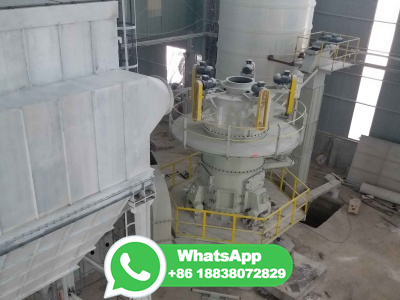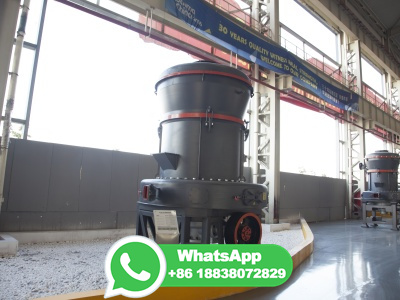
In 1856, however, Henry Bessemer invented a process of converting pig iron into steel, which used the injection of a blast of air through molten iron. The Bessemer Process used an eggshaped furnace that tilted once to accept the molten iron and then returned to an upright position so that impurities could blow out the top of furnace.
WhatsApp: +86 18037808511
Metallurgical coal (coking coal) is a vital ingredient for converting iron ore into pig iron in a process called reduction, which occurs in a blast furnace (BF). ... (BOF), the pig iron can be ...
WhatsApp: +86 18037808511
Abstract. Pig iron smelting and casting technology was first invented in China, and then a series of relevant major inventions and creations emerged, such as iron mold, softening cast iron technique, cofusion process of steelmaking and giant iron castings. The advanced steel smelting technology of China with its own characteristics has ...
WhatsApp: +86 18037808511
Molten pig iron (the initial product of smelting iron ore and a precursor to refined iron) was poured into the cupola, which contained perforations at the bottom called tuyeres. When air was forced through the tuyeres into the molten iron, various chemical reactions occurred.
WhatsApp: +86 18037808511
Cast Iron. The molten iron from the bottom of the furnace can be used as cast iron. Cast iron is very runny when it is molten and doesn't shrink much when it solidifies. It is therefore ideal for making castings hence its name. However, it is very impure, containing about 4% of carbon. This carbon makes it very hard, but also very brittle.
WhatsApp: +86 18037808511
Puddling is the process of converting pig iron to bar (wrought) iron in a coal fired reverberatory furnace. It was developed in England during the 1780s. The molten pig iron was stirred in a reverberatory furnace, in an oxidizing [citation needed] environment to burn the carbon, resulting in wrought iron.
WhatsApp: +86 18037808511
Like pig iron, sponge iron is an intermediary material in the steelmaking process (it'll get shipped off to SSAB to be turned into steel slabs), but in HYBRIT's case, its production results in ...
WhatsApp: +86 18037808511
Solution Pig iron is the most impure form of iron, containing about 255% of carbon along with impurities such as Sulphur, silicon, phosphorous, manganese etc. It is very hard, brittle and corrosionresistant. Conversion of pig iron into steel: The pig iron is converted to steel using the Bessemer process and basic oxygen furnace.
WhatsApp: +86 18037808511
During the fourteenth century, pig iron was developed. Pig iron is made by heating iron bars, coal coke, and limestone together in a fire or furnace. First the iron ore is covered with the coke and limestone and heated for up to a week, allowing the carbon to diffuse into the surface of the iron. Then, the metal is hammered and folded in order ...
WhatsApp: +86 18037808511
Making iron and steel from iron ore requires a long process of mining, crushing, separating, concentrating, mixing, agglomeration (sintering and pelletizing), and ... directly into ironmaking blast furnaces. Iron ore is the raw material used to make pig iron, which is one of the main raw materials to make steel; 98% of the mined ...
WhatsApp: +86 18037808511
Ironmaking is a multistep process in which iron ore (hematite, Fe2O3) is oxidized first into magnetite (Fe3O4) and then to an intermediate material known as wüstite (Fe1xO) before it can be refined into the pure iron (Fe) suitable for steelmaking. The challenging step, the team reveals, is the transition from wüstite to pure iron.
WhatsApp: +86 18037808511
Following three distinct operations are involved in the manufacturing process of pigiron: (1) Dressing (2) Calcination and roasting ADVERTISEMENTS: (3) Smelting. (1) Dressing: The iron ores as obtained from mines are crushed into pieces of size of 25 mm diameter. This is achieved in the rock crushers of ordinary type.
WhatsApp: +86 18037808511
Pig Iron. To create pig iron from the raw material which can be used, iron ore, coke, and small amounts of flux to draw out the impurities, are fed into a blast furnace. The furnace is then blasted with hot air at a temperature of about 1200˚C. This makes the coke burn, which in turn produces carbon monoxide, which then reacts with the raw iron.
WhatsApp: +86 18037808511
The main chemical reaction producing Molten Iron also known as PIG IRON is: The extracted Pig Iron contains 90 95% Iron, % % Carbon and other impurities, embedded in the Slag. It is ...
WhatsApp: +86 18037808511
Miner Vale s new iron ore briquettes, along with high grade lump ores from Canada, South Africa and Brazil, as well as biomass based direct reduced iron and steel production may offer alternative feed ... New iron developer FerroSilva said May 4 that it has developed a new biomassbased process for renewable metallic iron, targeting a 50,000 mt ...
WhatsApp: +86 18037808511
During direct reduction in a reactor, the iron ore reacts with hydrogen at a high temperature. This hydrogen acts as a reducing agent and removes the iron oxide from the iron ore. What remains is the raw pig iron. "By using electricity from renewable energy sources, the production of hydrogen is completely free of CO 2 emissions. This means ...
WhatsApp: +86 18037808511
The steelmaking process was first discovered around 4,000 years ago in what is today modern Turkey, and while the technology and our understanding of the underlying chemistry has changed greatly in that time, the basic principle remains the same. The Role of Reduction Reactions. You begin with iron ore a material rich in iron oxides.
WhatsApp: +86 18037808511
A charcoal fire built that was large enough to cover the end of a sow. To refine cast iron into wrought iron, heavy pigs and sows were dragged from the furnace to the forge by oxen. They were the finery hearth through an aperture in the side of the chimney. Rollers guided the sows into the fire where they were slowly melted.
WhatsApp: +86 18037808511
Once the facility obtains the raw materials and has all the equipment needed, the process of converting iron ore to steel can begin. Explore the details of each step of the basic oxygen steelmaking process below. Raw Materials Form Liquid Iron. First, steelworkers start by melting down the iron ore to form a molten liquid iron mixture.
WhatsApp: +86 18037808511
A new route for making steel from iron ore based on the use of hydrogen to reduce iron oxides is presented, detailed and analyzed. The main advantage of this steelmaking route is the dramatic reduction (90% off) in CO2 emissions compared to those of the current standard blastfurnace route. The first process of the route is the production of hydrogen by water electrolysis using CO2lean ...
WhatsApp: +86 18037808511
Iron obtained from the blast furnace called pig iron. So, the correct answer is "Option A". Note: The students should be aware about why blast furnaces are used to convert iron ore into iron. There are various kinds of iron ores present, for example, limonite, iron pyrites etc. The method of converting an ore into a metal is termed as ...
WhatsApp: +86 18037808511
Almost 70 years ago, voestalpine developed the breakthrough technology LinzDonawitz converter process, which enabled the largescale and rapid conversion of pig iron into crude steel. This technology is still used and about 70% of the worldwide steel production is made by this technology. More than 140 years of technical experience combined ...
WhatsApp: +86 18037808511
The Hismelt process employs a single smelt reduction vessel (SRV) where iron oxide fines are injected deep into hot metal melt, which instantly reduces the ore to produce iron and carbon monoxide. Flux and coal are also injected into the bath near the bottom, which enables carbon replenishment and captures impurities (silica, etc.).
WhatsApp: +86 18037808511
The BF + BOF route, which dominates the primary steel production landscape in the EU, requires a coke input, derived from coal, to act as a reducing agent to convert iron ore into pig iron. Fossil fuel use is therefore inherently tied to the BF + BOF production process, making it among the most carbon intensive and hardtoabate industrial ...
WhatsApp: +86 18037808511
Into the top of a big, lava lampshaped blast furnace goes iron ore and coking coal, and out comes waste slag, pig iron (later refined into steel), and a whole lot of CO2.
WhatsApp: +86 18037808511
Study with Quizlet and memorize flashcards containing terms like Alloys are mixtures of a metal with: (Multiple Choice) A) only other metals. B) other nonmetals. C) both metals and non metals. D) iron, When making steel, the first process is to convert iron ore into pig iron. Which furnace is used for this process? A) Open hearth furnace B) Basic oxygen furnace C) Electric furnace D) Blast ...
WhatsApp: +86 18037808511
It was a means of decarburizing pig iron by slow oxidation, with iron ore as the oxygen source, as the iron was manually stirred using a long rod. Puddling was done in a reverberatory furnace, allowing coal or coke to be used as fuel. The decarburized iron, having a higher melting point than cast iron, was raked into globs by the puddler.
WhatsApp: +86 18037808511
For general information about merchant pig iron, please visit the pig iron page. Modern blast furnaces produce more than 10,000 tonnes per day. Blast Furnace Process. The blast furnace is a countercurrent gas/solids reactor in which the descending column of burden materials [coke, iron ore and fluxes/additives] reacts with the ascending hot gases.
WhatsApp: +86 18037808511
Just as pig iron can be produced from iron ore in the electric furnace, so can pig steel be produced by a close regulation of the carbon content of the charge. Sufficient carbon is provided for reduction of the ore, but not enough to combine to any appreciable extent with the product.
WhatsApp: +86 18037808511
iron processing, use of a smelting process to turn the ore into a form from which products can be fashioned. Included in this article also is a discussion of the mining of iron and of its preparation for smelting. Iron (Fe) is a relatively dense metal with a silvery white appearance and distinctive magnetic properties.
WhatsApp: +86 18037808511
During direct reduction in a reactor, the iron ore reacts with hydrogen at a high temperature. This hydrogen acts as a reducing agent and removes the iron oxide from the iron ore. What remains is the raw pig iron. "By using electricity from renewable energy sources, the production of hydrogen is completely free of CO 2 emissions. This means ...
WhatsApp: +86 18037808511
Iron ore is the raw material used to make pig iron, which is one of the main raw materials to make steel—98% of the mined iron ore is used to make steel. In 2011 the Financial Times quoted Christopher LaFemina, mining analyst at Barclays Capital, saying that iron ore is "more integral to the global economy than any other commodity, except ...
WhatsApp: +86 18037808511
The pig iron itself does not have much use but it finds a great number of applications when converted into steel alloys in the steel industry. The process of manufacturing pig iron is a bit complicated. The following steps explain the same as simply as possible. Raw MaterialsThe raw materials used in the blast furnace to produce highquality ...
WhatsApp: +86 18037808511